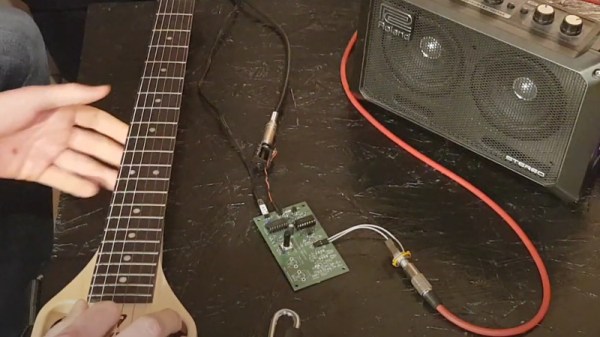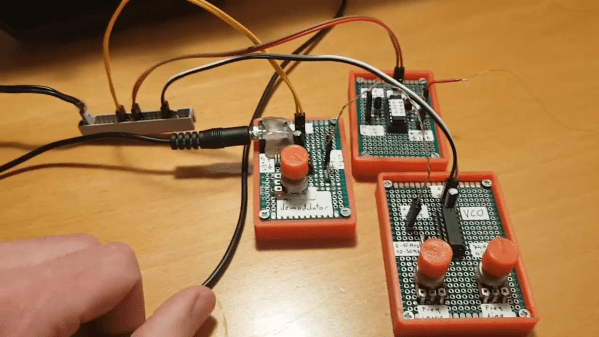With inexpensive microntrollers capable of the most impressive feats of sound synthesis, it’s not so often we see projects that return to an earlier style of electronic music project. The 1-bit synth from [Electroagenda] takes us firmly into that territory, employing that most trusty of circuits, a 555.
It’s a time-honored circuit, a 555 provides a note clock that drives a 4017 that functions as a sequencer. This switches in a set of voltage dividers, which in turn control another 555 oscillator that produces the notes. It’s a fun toy straight from the 1970s, right down to the protoboard and hookup wire construction. There’s a demo video with some lovely beeps below, and we think most of you should have what it takes to make your own.
If you’re seeking more inspiration, may we introduce you to our Logic Noise series?
















